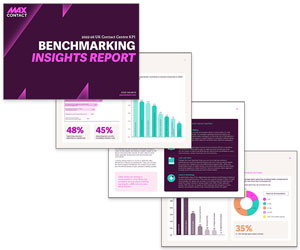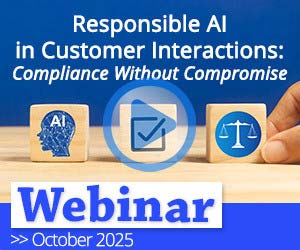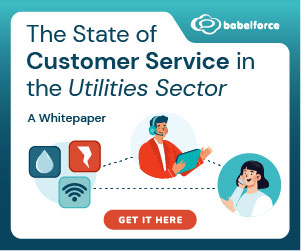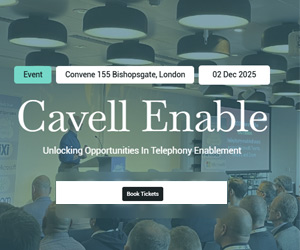Our panel of experts make their predictions of how the make-up of the contact centre will develop in 2018.
1. Skype May Start to Enter Some Contact Centres
In 2018, as Skype for Business takes hold within the enterprise, more businesses will look to integrate it with their contact centre.
However, the need for full multichannel capability, as well as call recording and PCI compliance, will drive more users to look at hosted cloud platforms, which can offer integration with Skype for Business.
Gartner has predicted that by 2020 one in five new contact centre seats will be run on Skype for Business. Therefore, it can be expected that this trend will start to pick up from 2018.
2. Organisations Will Begin to Recognise the Importance of Contact Centres
The increasing popularity of digital interactions means that in 2018 we’ll see many contact centre teams redefine the value of the contact centre to an organisation.
The biggest challenge for any contact centre is going to be managing multiple customer interactions across multiple channels while giving the customer a seamless experience. Given its traditional role at the front line of customer service, the contact centre is the logical home of the customer journey.
Organisations will start looking for technology that allows them to define a seamless multichannel journey that can be adapted in real time, without having to go through the IT department.
3. More Contact Centres Will Consider the Cloud
Today’s contact centres are dealing with two key challenges. On the one hand, there are growing volumes of digital interactions. On the other hand, customer experience has become more important than ever for successful brand differentiation.

Enda Kenneally
These challenges suggest that 2018 may be the tipping point for many contact centres.
West recently commissioned research that confirmed that 88% of contact centre professionals expect digital to overtake voice by 2020 or sooner.
If this is to be the case, cloud adoption will most likely increase due to its multichannel functionality and future-proofing capabilities.
Thanks to Enda Kenneally at West Unified Communications
4. Compliance Will Drive Organisations to Revisit Customer Interactions
The introduction of new compliance standards like MiFIDII and GDPR is causing organisations to revisit long-standing practices.

Ian Bevington
By looking beyond the minimum requirements, organisations will take the opportunity to connect disparate services, overhaul data management, streamline processes and leverage technology investments.
2018 may also see call recording become an essential part of customer dispute resolution and quality management. This is because established call centre practices will be adopted wherever there is a customer touchpoint, due to the increasing focus on the customer journey.
Thanks to Ian Bevington at Oak Innovation
5. Use of Messaging Apps to Provide Customer Service Will Increase
New apps and social networks are launched all the time. WhatsApp is a great example of a channel that’s taken off rapidly and is becoming a popular choice for customer service. This will only increase in the next year.
Businesses that use messaging apps to improve their service can differentiate themselves and gain a competitive advantage. For example, using Facebook Messenger, some of the biggest companies around have already offered their customers more comprehensive support.
Messenger bots have helped KLM’s customers to manage their flights, Uber passengers to hail a ride and have given hungry Burger King regulars the chance to order ahead.
6. The Use of Speech Analytics in the Contact Centre May Increase
As organisations increase their focus on the customer journey, more companies will want more raw data from phone calls with customers, to look for ways to boost the customer experience.
Also, in NewVoiceMedia’s Serial Switchers research, it was found that 70% of consumers are more loyal to a company when they provide excellent customer service. And 40% spend more.

Tim Pickard
Bearing this in mind, more contact centres could invest in speech analytics, as the technology can help to reveal the most frequently made complaints and the most common reasons why customers call your business.
Also, it can systematically scan calls to spot trends, flag individual calls for analysis and implement many other processes for improved quality assurance.
Thanks to Tim Pickard at NewVoiceMedia
7. The Goal Will Still Be to Do More for Less
As contact centres continue to grapple with budgets in an uncertain economy, it will still be about ‘doing more with less’.
Contact centre performance management tools will be utilised to enable staff to obtain a more meaningful measurement of productivity, whether in the office or working remotely. Blending of staff (switching someone from one role to another) to tackle peaks and troughs in contact volumes will become easier.
Channel shifting may become prevalent, with, for example, managers moving inbound call contacts onto the website, where customers can find quick answers or use webchat.
Queue-management techniques like offering customers the chance to hang up but retain their place in a queue could also be used widely to provide better service and reduce the pressure on staff.
In addition, outbound diallers will take up more of the workload traditionally done by advisors, whether that be sales, appointment setting, renewal notifications etc., leaving them to concentrate on other tasks.
8. More Attention Will Be Paid to Utilising Dark Data
Dark data, which may be hidden unused in silos across the business but could be a goldmine of customer information– will start to see the light of day as contact centres invest in analysing and using it to engage better with customers.
Even anonymous information can be used if you measure emotions. For example, what mood was the customer in when you were on the phone to them? This will help contact centres gauge their performance.
It’s about making data useful so that you can really understand individual customers – but ensure you comply at the same time (remember GDPR will be implemented in May 2018). That’s where ‘Precision Dialling’ comes in, where you use your clean data on the customer to contact them on the right medium, at the right time, with the right message to suit them.
9. Contact Centres Will Move Away From Silos Onto One Unified System
In 2018, companies will spend more time and resources on mapping their customers’ journeys more accurately. There will be many staff involved in a customer’s journey, at different touchpoints, so each of them must be involved to pinpoint the collaboration technology needed.
In 2018, companies will spend more time and resources on mapping their customers’ journeys more accurately.
Ken Reid
A unified, real-time system improves productivity and customer service because staff can get to up-to-date information easier and faster. Advisors need this single view of the journey customers have taken to make contact – historically as well as in real time.
This will be increasingly important in 2018, because a data-driven approach provides that valuable personalisation that customers expect, and it’s widely seen as the most successful strategy for connecting with them, on a one-to-one basis.
10. There Will Still Be a Need for a Human Touch
Email has shown itself to be resilient as a communications channel, as it can be accessed by mobile, it isn’t hard or expensive to set up and can be automated to suit your business strategy. It’s particularly useful as a lead generation tool, as it’s easy to personalise and segment.

Ken Reid
However, in 2018, customers will still want the option to talk to a human. It might be that particular clients simply prefer a phone call, or it might be that you’re dealing with complex transactions or complaints, where everyone wants a fast and personal service.
Just be prepared and ensure that the advisors taking calls are skilled to answer these enquiries and have the correct unified system to enable them to provide an excellent customer response.
Thanks to Ken Reid at Rostrvm Solutions
11. More Contact Centres Will Use Voice of the Employee Surveys
Many companies are starting to understand the relationship between advisor engagement and Net Promoter Scores (NPS), so we would expect to see a rise in employee-led surveys in 2018.
Bright’s recent research showed that a 1:1 ratio exists between employee NPS and contact NPS as scored by customers. Meaning for every point that the contact centre manages to increase its E-NPS, their Customer NPS score will increase at the same level.

Simon Thorpe
The research also found a huge potential for businesses to increase their Customer NPS by turning “passive” colleagues into promoters.
Employee-led surveys give managers the opportunity to temperature check the advisor population but they also present them with a way of tapping into the voice of the employee, all of which can be analysed in real time.
Thanks to Simon Thorpe at Bright
12. Focus on the Customer Experience Is Set to Increase
In 2017, we saw more centralised senior roles responsible for a larger part of the customer experience than ever before (e.g. contact centres, branches as well as digital). This enabled organisations to gain a fuller view of the customer journey and finally remove silos.

Mats Rennstam
This is, however, still rare, and these roles do not normally have a say in, for example, marketing, product design or customer experience in apps (where of course an increasing number of interactions take place).
However, while there’s a long way to go, this trend will likely continue into 2018.
To do this, here are two recommendations that should be followed to smooth the way.
- Outside-in – Let the voice of the customer lead the strategy regardless of who owns what in the organisation.
- Top-down – There needs to be 100% buy-in from the CEO to make this work as it will involve significant changes in organisation as well as managers’ mindsets.
Thanks to Mats Rennstam at Bright
13. Some Contact Centres Will Combine Interaction Analytics With Robotics
Interaction analytics and robotics will become part of a 360-degree solution, which will help set a high standard of efficiency, scalability and dynamic customer service across all channel types.

Neil Draycott
The contact centres that use this solution will look further at automating simple but time-consuming tasks through robotics, consequently freeing up advisor time to focus on providing high-quality customer service.
In tandem, interaction analytics will also allow detailed insight into customer and advisor behaviour, driving customer service improvement and reducing customer effort, by providing great insight into the Voice of the Customer (VoC).
Thanks to Neil Draycott at Business Systems
14. Cloud Contact Centres and Omnichannel Will Come of Age
Research suggests that over half of contact centres are not currently using cloud technology but are planning to do so in the next three years.
This adoption of a more flexible infrastructure is important to bear in mind, as many also predict that 2018 will see greater emphasis on omnichannel.

Colin Hay
Customers will begin to choose alternative communication channels, such as social media and messaging apps, but will expect the same service quality.
The cloud allows organisations to take an omnichannel approach to customer service by combining integration in the cloud with skill-based routing, which can help to keep costs down while maintaining service levels.
Thanks to Colin Hay at Puzzel
15. Many Contact Centres Will Focus on Automation
Adopting a level of automation ensures customers have their questions answered promptly, while it can take away simple, repetitive data inputting tasks from agents, freeing up their time to answer the more complicated and sensitive questions.

David Rowlands
This is why many predict that automation will continue to grow within the industry in 2018.
In an era when online brands are defined by the service that they provide, contact centre advisors have become the face of the business. This means having highly skilled, knowledgeable advisors will not only be a crucial part of the modern contact centre, but also across the wider business. That said, they must be able to handle multiple media streams.
Thanks to David Rowlands at 8×8
16. Integrating Solutions Will Become a Key Contact Centre Priority
In 2017, companies continued to implement a variety of ‘stovepipe solutions’: chatbots, ordering through personal assistants such as Echo, social media, etc.

Jane Price
Companies were focused on bringing these new, albeit non-connected and device-specific, customer care channels online.
Looking to 2018, it can be expected that companies will find it difficult to run channels in individual silos, because of its negative impact on the customer experience.
This means more companies will look to settle on an integrated approach to customer service, a single platform that is capable of handling everything.
Thanks to Jane Price at Interactions
17. Increased Customer Expectations Will Force Contact Centres to Adapt
As technologies like WebRTC take hold, customers will be more demanding, which will put pressure on contact centres to manage queues efficiently. This will mean seamless switching of advisors between different media sessions.

Patrick Bosworth
In this scenario, there is no more room for siloed activities in the contact centre.
The trend has already begun and is likely to continue into 2018, as the call-blending model of the ACD starts to get replaced by the media session blending model of the Automatic Session Distributor (ASD).
An ASD system allows all media sessions to be blended seamlessly; not just voice, but also email, chat, video and SMS.
Thanks to Patrick Bosworth at Sytel
18. WebRTC Looks Set to Become an Increasingly Popular Contact Centre Tool
WebRTC will be the ‘must-have’ game-changing technology.
Apple’s commitment to it in 2017 means that all the major browsers now support WebRTC. With this being the case, many predict an increase in the take-up of the technology.

Simon Wilson
With WebRTC available as standard in browsers and applications, when customers engage with organisations’ websites, they will expect seamless switching between chat, voice and video as well as co-browsing and file-sharing.
Also, WebRTC will provide advisors with contextual information about customer journeys on their website, which can provide useful information.
Thanks to Simon Wilson at Sytel
19. Automation and Self-Service Will Alter the Nature of Contact Centre Enquires
As the digital age continues to progress, many customers will be happy to turn to self-service or automated solutions to resolve simple issues. In fact, Microsoft’s Richard Peers suggests that by 2020, 85% of customer interactions will be managed without people.
Whether he’s right about the scale or not, it does mean that, increasingly, call centre advisors will be confronted by customers who arrive with complex problems and probably in a more agitated state of mind.
This change in difficulty of enquiries could see more call centres turn to technologies that can analyse more interactions and identify emerging issues more quickly.
20. Advanced Contact Centres Will Do More to “Coach” Chatbots
While more contact centres will turn to Artificial Intelligence (AI) applications, to reduce contact centre traffic, the quality of machine learning will only be as good as the information that it draws on.
To ensure these automated processes deliver the best possible customer experience, it will be important that they have access to analysis of every customer interaction.

Frank Sherlock
The insights and data from technology, such as interaction analytics, that is already used to coach contact centre advisors, will be utilised to ‘train’ chatbots and AI applications to respond in the right way to customer interactions.
This will ensure that customers benefit by receiving what feels like a more personalised service that meets their needs in a more streamlined way.
Thanks to Frank Sherlock at CallMiner
21. Workforce Management (WFM) Will Continue Its Evolution in Key Areas
In 2018, contact centres will become more skilled with workforce management (WFM). Most WFM solutions currently use an app or portal, and these will continue to develop to ensure the employees have total control over their work patterns.

David Evans
Forecasting modules will develop to include some AI that will look at the best parameters for forecasting. There will also be further development of employee self-service and mobile options – the ability to self-schedule their own activities such as breaks and lunches.
The business intelligence that WFM provides will also continue to be integrated into third-party applications to provide a more rounded view of business and employee performance.
Thanks to David Evans at Olive
22. The Role of the Contact Centre Advisor Could Start to Evolve
We expect to see ongoing investment by businesses in self-service and automation solutions during 2018. The focus will continue to be on empowering customers to do more of the routine and straightforward interactions themselves.
As a result, the kinds of interactions handled in the contact centre are likely to be more complex and of higher value than in the past, consequently requiring more advanced technical and interactions skills.
This trend is encouraging businesses to think differently about the kinds of contact centre advisors they are looking to recruit. They will need to train and re-skill existing advisors, effectively empowering them to take more difficult decisions independently and, where appropriate, to upskill across a range of new digital interaction channels.
23. The Push to Self-Service Will Reshape Contact Centre Metrics
As businesses move more and more of their customer interactions through a self-service channel, they will increasingly need to reassess the contact centre metrics they collect.
That’s partly because, on the one hand, they are relying less and less on human intervention, while on the other, when they do need humans to get involved, the problems concerned are typically more complex and more protracted.
As a result, traditional measurements like average handle time are increasingly outdated and outmoded.
Over 2018, we will continue to see businesses dropping this metric in favour of alternative measures that focus more on the value to the customer or the strength of the relationship with the business such as first contact resolution (FCR) or Net Promoter Score (NPS).
24. Optimising the Customer Journey Across All Channels Will Become a Priority
As organisations move more of their interactions through automated or self-service channels, they are increasingly thinking about customer journey types. They are, in particular, looking to assess what kinds of customer journeys particularly lend themselves to self-service and which would be better served by some kind of human intervention.
That’s why during 2018, it is expected that more organisations will focus on developing customer personas and put effort into segmenting their customer base.

Jeremy Payne
It might be, for example, that most of their customers are millennials who are heavy users of Instagram and are used to interacting in a visually based way, or it might that they are mainly baby boomers who continue to favour face-to-face or traditional fixed-line interactions.
Either way, we expect to see a greater focus on understanding and optimising customer journeys.
Thanks to Jeremy Payne at Enghouse Interactive
25. Disruption in the Marketplace Will Continue to Drive Change in the Customer Experience
Traditional organisations are being challenged by new players that are digital natives.
Companies such as Amazon and Uber are moving the goal posts for customer experience for the more traditional companies, as the consumer now has higher expectations of how they interact with brands.
Today, people interact with organisations first via their smartphone and apps. With this in mind, traditional businesses need to look to provide a seamless experience, across various channels, to the customer in order to compete with the new digitally nimble disruptors.
26. Interest in Self-Service and Speech Recognition May Grow
There is a lot of growing interest around digital self-service and AI. Speech recognition is not a new technology, but it has reached a level of consumerisation thanks to home devices such as Amazon Alexa and Google Home.

David Paulding
We are now used to interacting with voices at home and more familiar with chatbots. This means that consumers are now more comfortable interacting with chatbots when they call a contact centre – and in some cases even prefer it.
In which case, 2018 may be the year organisations invest more in these technologies to address pinch points, or to free up advisors to deal with more complex queries and higher value transactions.
Thanks to David Paulding at Genesys
To find out more up-to-date predictions, read our article: 30 Contact Centre Predictions for 2021
Author: Charlie Mitchell
Published On: 8th Nov 2017 - Last modified: 4th Sep 2025
Read more about - Technology, 8x8, Artificial Intelligence (AI), Automation, Bright, Business Systems, CallMiner, Chatbots, Cloud, Colin Hay, David Rowlands, Enghouse Interactive, Interactions, Intrado, Jeremy Payne, Ken Reid, Olive, Puzzel, Rostrvm, Speech Analytics, Sytel, Vonage, Workforce Management (WFM)










































